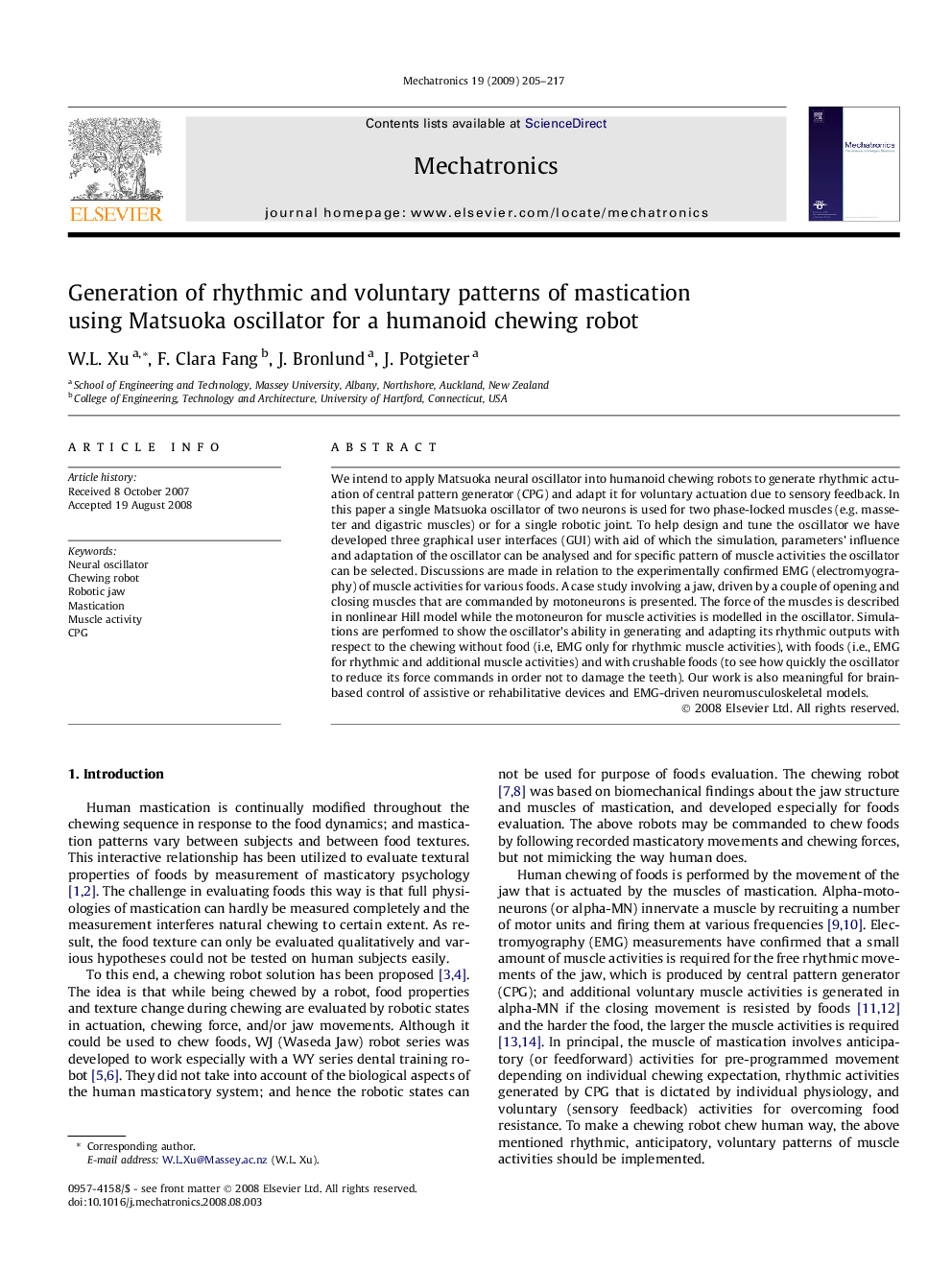| کد مقاله | کد نشریه | سال انتشار | مقاله انگلیسی | نسخه تمام متن |
|---|---|---|---|---|
| 732013 | 893197 | 2009 | 13 صفحه PDF | دانلود رایگان |

We intend to apply Matsuoka neural oscillator into humanoid chewing robots to generate rhythmic actuation of central pattern generator (CPG) and adapt it for voluntary actuation due to sensory feedback. In this paper a single Matsuoka oscillator of two neurons is used for two phase-locked muscles (e.g. masseter and digastric muscles) or for a single robotic joint. To help design and tune the oscillator we have developed three graphical user interfaces (GUI) with aid of which the simulation, parameters’ influence and adaptation of the oscillator can be analysed and for specific pattern of muscle activities the oscillator can be selected. Discussions are made in relation to the experimentally confirmed EMG (electromyography) of muscle activities for various foods. A case study involving a jaw, driven by a couple of opening and closing muscles that are commanded by motoneurons is presented. The force of the muscles is described in nonlinear Hill model while the motoneuron for muscle activities is modelled in the oscillator. Simulations are performed to show the oscillator’s ability in generating and adapting its rhythmic outputs with respect to the chewing without food (i.e, EMG only for rhythmic muscle activities), with foods (i.e., EMG for rhythmic and additional muscle activities) and with crushable foods (to see how quickly the oscillator to reduce its force commands in order not to damage the teeth). Our work is also meaningful for brain-based control of assistive or rehabilitative devices and EMG-driven neuromusculoskeletal models.
Journal: Mechatronics - Volume 19, Issue 2, March 2009, Pages 205–217